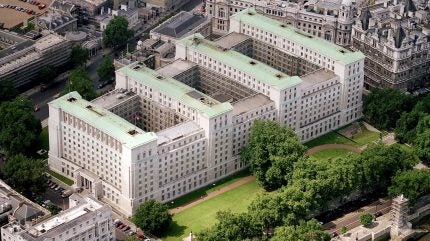
The UK Ministry of Defence (MoD) will effectively house a new “FTSE 100 company” headed by a new National Armaments Director as part of defence reforms announced by Defence Secretary John Healey, who said that efficiencies would drive £10bn ($12.6bn) in savings over the next decade.
Delivering a speech at the Institute for Government on 18 February 2025, Healey said the reform would see the creation of a new senior stakeholder team, comprised of the Chief of Defence Staff (CDS) Admiral Tony Radakin, the MoD’s Permanent Secretary David Williams, the Chief of Defence Nuclear Madelaine McTernan, and an as-yet unfilled post of a National Armaments Director.
CDS Radakin will lead a new Military Strategic HQ and will bear responsibility for force design and war planning across the UK Armed Forces, while the Permanent Secretary will run “a leaner” MoD, equipped with more “policy muscle”, according to Healey.
Continuing, Healey said the new National Armaments Director would be tasked with “fixing procurement and driving growth”, with the Chief of Defence Nuclear to “deliver the national nuclear enterprise”.
This new senior grouping will hold regular meetings with Healey, and sees the consolidation of stakeholders in operational, procurement, and investment programmes from a current ten-person structure down to the four abovementioned posts.
An initial operating capability for the team has been set for 31 March 2025.
The appointment of the National Armaments Director appears to be the lynchpin for this reform, who will be responsible for the running a single new £20bn investment portfolio, bringing together eight separate procurement budgets across the MoD into a single fund.
“I see this as a new FTSE 100 company within the MoD tasked, if you like, with getting the very best capabilities needed into the hands of our frontline forces,” Healey stated.
However, Healey admitted that the MoD could not pay the same rate to the new National Armaments Director than would be available in the private sector, instead effectively calling to patriotic duty and pride in national defence industrial renewal.
A timeline for the full-time appointment of the National Armaments Director is still unknown, with the job listing not yet published.
What about UK defence spending?
Washington’s recent abrogation of its chair position of the Ukraine Defense Contact Group and calling on European countries to spend up to 5% of their GDP on defence, was met with incredulity in Europe’s capitals.
Further, the statement by US Defense Secretary that Europe should now take responsibility for its “conventional security”, and European peacekeepers committed to ensure a peace deal in the Ukraine-Russia war would operate outside of Article 5, raised questions about Washington’s commitment to Nato’s founding principal.
Provided a public platform to respond to Washington’s calls, Healey merely reiterated the earlier-known plans by the UK to boost defence spending from its current 2.3% to 2.5%, with more details due in the Spring with the release of the Strategic Defence Review.
Indeed, US comments at the Munich Security Conference and Ukraine Defense Contact Group have apparently not impacted UK defence thinking, with Healey responding “No”, when queried by the media at the IfG briefing to this end.
It appears rather than taking up Washington’s challenge and driving towards three, four, or even five percent on defence spending, any ‘new’ money will have to be found with efficiencies.
These will no doubt include cuts from within the MoD, given references to a “leaner” department and Williams’ own testimony to the Defence Committee in 2024 that referenced a headcount reduction by around 10%, or over 5,000 people, by the end of the current parliament.
The UK’s ability to increase defence spending is virtually impossible at a time when economic growth is non-existent, inflationary pressures reduce real-terms spending, and fiscal black holes continue to pop up from left and right within government. Even increasing to 2.5% of GDP would still only return the country to 2010 levels, having seen a near 20% real-terms decline over the past 15 years.
Coupled with a British Army long since being able to field an effective division-sized ground combat force amid falling recruitment, a fading Royal Navy, and looming decisions on air combat, the UK’s ability to meet its own security challenges, let alone shoulder a continental responsibility as called for by Washington, is slim at best.
The writing was likely already on the wall, following extensive defence cuts in November 2024 that accelerated a decline that had long-since set in.



